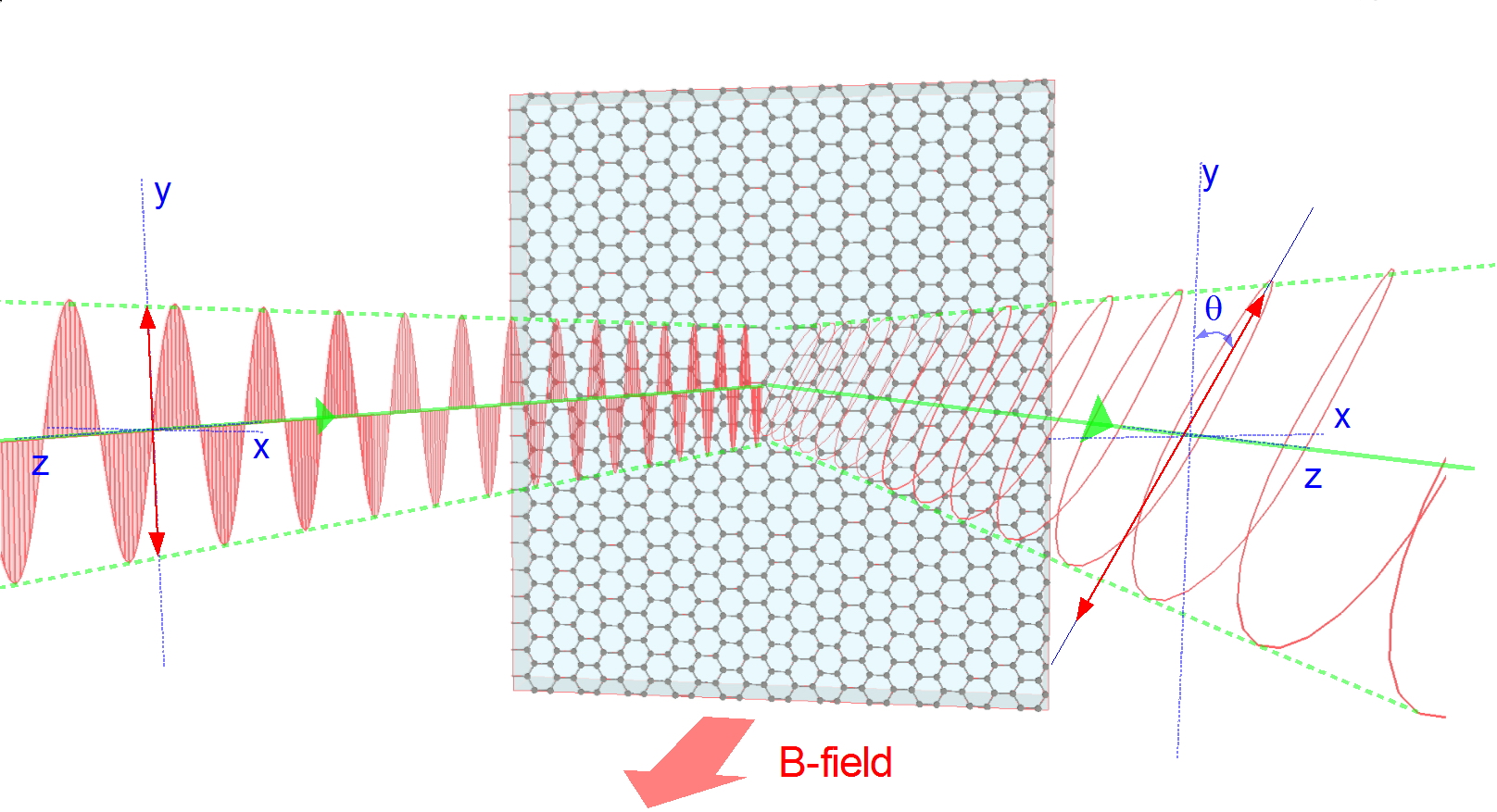Infrared vision sees through multiple layers of graphene
Could lead to new optical devices using graphene for communications, imaging, and signal processing
December 9, 2013

The
direction that a light wave is oscillating changes as the wave is
reflected by a sheet of graphene. This changing direction of oscillation
— also known as polarization — enabled researchers to identify the
electronic properties of multiple sheets of graphene stacked atop one
another, even when they were covering each other up. (Credit: Chul Soo
Kim, U.S. Naval Research Laboratory)
The method involves shooting a beam of infrared light at the stack, and measuring how the light wave’s direction of oscillation changes as it bounces off the layers within.
When a magnetic field is applied and increased, different types of graphene alter the direction of polarization, in different ways. A graphene layer stacked neatly on top of another will have a different effect on polarization than a graphene layer that is messily stacked.
“By measuring the polarization of reflected light from graphene in a magnetic field and using new analysis techniques, we have developed an ultrasensitive fingerprinting tool that is capable of identifying and characterizing different graphene multilayers,” said John Cerne, PhD, UB associate professor of physics, who led the project.
The technique allows the researchers to examine dozens of individual layers within a stack.
Graphene, a nanomaterial that consists of a single layer of carbon atoms, has generated huge interest due to its remarkable fundamental properties and technological applications. It’s lightweight but also one of the world’s strongest materials.
But Cerne’s new research looks at graphene’s electronic properties, which change as sheets of the material are stacked on top of one another. The findings appeared Nov. 5 in Scientific Reports, an online, open-access journal produced by the publishers of Nature.
The study showed that absorption and emission patterns change when a magnetic field is applied, which means that scientists can turn the polarization of light on and off either by applying a magnetic field to graphene layers or, more quickly, by applying a voltage that sends electrons flowing through the graphene.
“Applying a voltage would allow for fast modulation, which opens up the possibility for new optical devices using graphene for communications, imaging and signal processing,” said first author Chase T. Ellis, a former graduate research assistant at UB and current postdoctoral fellow at the Naval Research Laboratory.
Abstract of Scientific Reports paper
The remarkable electronic properties of graphene strongly depend on the thickness and geometry of graphene stacks. This wide range of electronic tunability is of fundamental interest and has many applications in newly proposed devices. Using the mid-infrared, magneto-optical Kerr effect, we detect and identify over 18 interband cyclotron resonances (CR) that are associated with ABA and ABC stacked multilayers as well as monolayers that coexist in graphene that is epitaxially grown on 4H-SiC. Moreover, the magnetic field and photon energy dependence of these features enable us to explore the band structure, electron-hole band asymmetries, and mechanisms that activate a CR response in the Kerr effect for various multilayers that coexist in a single sample. Surprisingly, we find that the magnitude of monolayer Kerr effect CRs is not temperature dependent. This unexpected result reveals new questions about the underlying physics that makes such an effect possible.
(¯`*• Global Source and/or more resources at http://goo.gl/zvSV7 │ www.Future-Observatory.blogspot.com and on LinkeIn Group's "Becoming Aware of the Futures" at http://goo.gl/8qKBbK │ @SciCzar │ Point of Contact: www.linkedin.com/in/AndresAgostini
 Washington
Washington